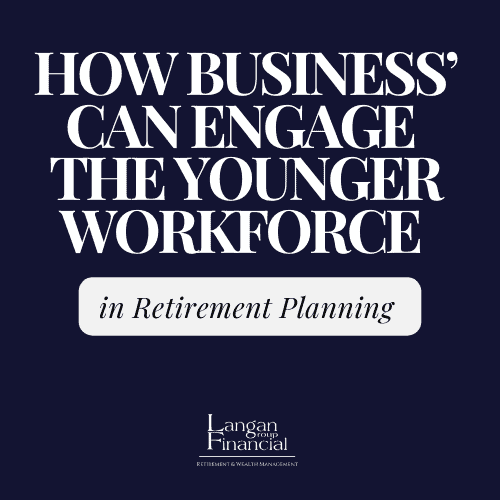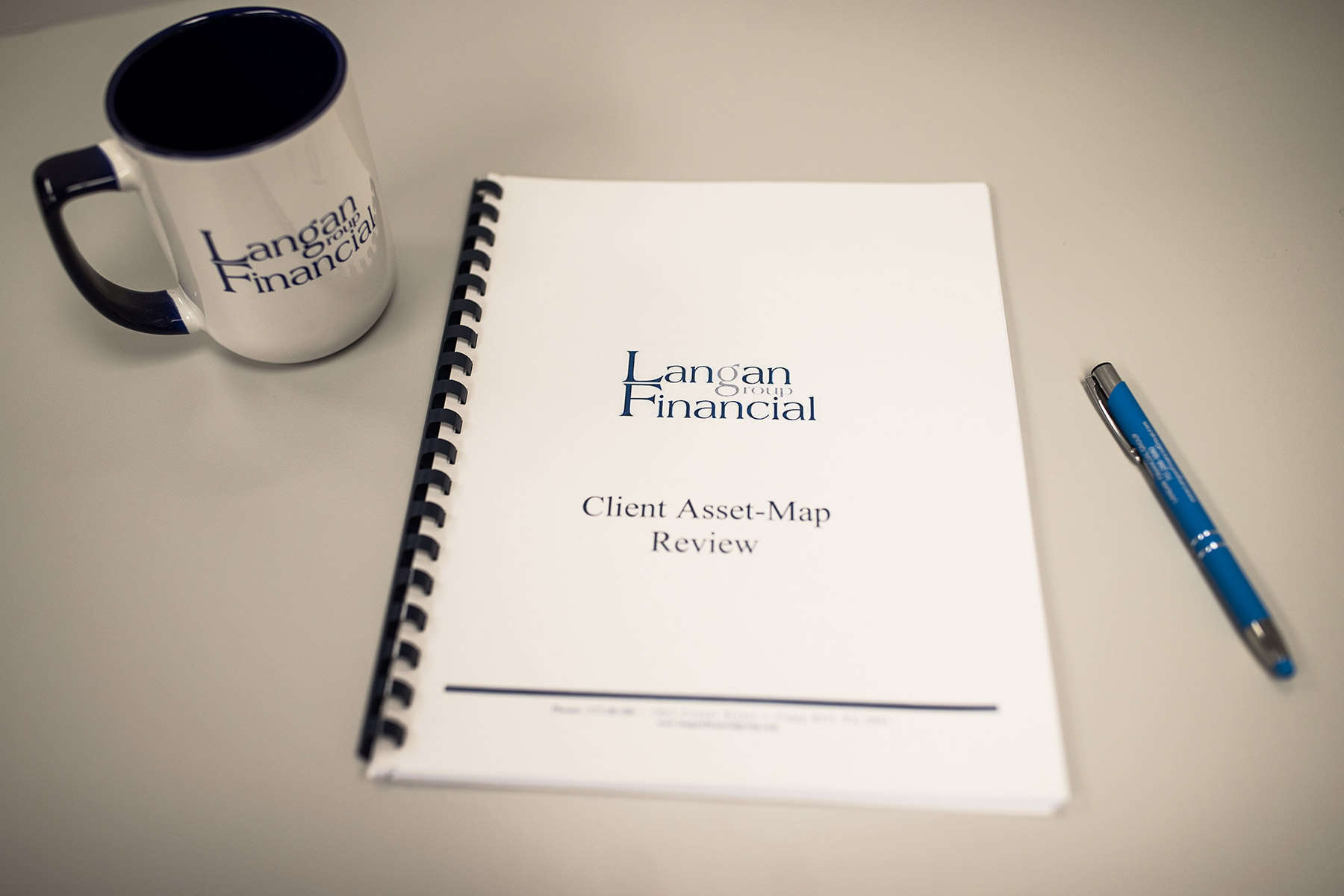Many companies struggle to get younger employees engaged in their group retirement plans. This can be due to a number of factors, including eligibility requirements, student loan debt, and a lack of financial literacy. But don’t despair! This guide will explore the common barriers young employees face and offer four key methods companies can use to increase participation and empower their younger workforce to save for a secure future.
What are a Group Retirement Plan’s Barriers to Entry?

There are two main barriers that prevent younger employees from joining a company’s group retirement plan:
- Eligibility
- Debt/Loan
Some plans may require younger employees to be a certain age or be at the company for a certain period of time prior to being eligible for the plan.
Another barrier is if the younger employee has too much debt or loans. If this is the case, they are typically more concerned about paying off these obligations prior to thinking about retirement as these are more immediate concerns. In their eyes, retirement is so far off, it can be delayed, allowing them to take care of more immediate needs.
Methods to Increase Younger Employees in Your Company’s Retirement Plan
There are four areas of engagement companies can pursue to help engage their younger employees in retirement planning.
- Lowering the Entry Barrier
- Better communication
- Increasing accessibility to financial resources
- Incentivizing your employees to participate
Lowering the Entry Barrier to 401(K)s
One of the main ways to get the younger workforce involved in a company’s 401(k) plan is through the plan design. Multiple methods have that have statistically improved 401(k) participation in plans such as auto enrollment.

Auto enrollment allows employers to automatically deduct elective deferrals from employees’ wages at the amount set by the employer (typically the amount to get the full company match if applicable). If they decide they do not want to participant, they will have 90 days from their initial contribution to decline and receive the money back. They may also lower their contribution amount below the preset deferral rate.
According to a 2021 Vanguard study this feature can increase participation rates to as high as 90%. In plans with the auto enrollment feature, employees were three times more likely to contribute to their retirement plans than those without the auto enrollment feature.
Built into the auto enrollment, is also the auto escalation. This is a similar concept in which each year, a person’s contribution rate increases a small percentage such as one percent up to a maximum of 10 to 15%. This is to help minimize cost of living adjustments and inflation.
According to Vanguard’s study, with these two features combined, “employees are saving a higher percentage of their pay (65%)”. In addition, the employer’s plan assets are growing 47% faster. These features are having an incredible, positive impact on a company’s group retirement plan.
Recently, the Federal Government passed the Secure Act 2.0. Under this act, various provisions impacting current group retirement plans were created or impacted. One new feature created with this is called the Student Loan Match Program. Starting in 2024, employers can make matching contributions to their employees’ group retirement plans after they make a qualifying student loan payment.
“The decision between paying off student loans or contributing to a 401(k) is a critical financial choice that requires the consideration of both short and long-term goals. While there isn’t a right or wrong answer, giving the employee the option to tackle both at the same time seems like the best path for their financial future.”
Alex Langan, Chief Investment Officer of Langan Financial Group
Another issue several plans run into is having too many investment options. With having so many options people run into paralysis by analysis. They become overwhelmed with all that is available and instead of working through it, it is easier to push it aside and forget about it. There are only so many options necessary for your employees. Do not make it so extreme they cannot work through it themselves or talk to a financial professional about it.
Finding the Right Retirement Plan Communication and Education
Communication is pivotal in any plan. Plan participants as well as potential participants need to have regular check ins. The financial advisor should check in to conduct reviews, provide any one-on-one financial planning, and see how things are going for the employees. Plan participants should be able to easily access the plan’s financial advisor to ask any question and receive guidance.
In addition, the plan’s financial advisor should be conducting educational seminars with the HR department to educate employees and potentially enroll them. The financial advisor should also provide fiduciary responsibility education and best practice tips to the HR department for monitoring and administering the plan.

It is important to have an advisor who is easily accessible to plan participants and can provide guidance. If not, the HR department will need to field these types of questions.
Part of the reason younger employees do not contribute to retirement plans is due to lack of education. Financial advisors for the plan should be engaging employees through financial workshops. In these workshops, advisors can discuss not only the plan details but also:
- Budgeting
- Investing 101
- Roth vs. Traditional Investing
- How to Create a Financial Plan
- Maximizing Your Social Security
- The Power of Compound Interest and more
Through the education, the plan participants should be educated specifically on compound interest. Most people do not realize the power of time. For example, a $10,000 investment that returns 7% every year is worth $10,800 in the first year. In 25 years, compound interest turns the $10,000 investment into $68,484.
If young employees are consistently putting away, even a small amount monthly, with the power of compound interest over 40 years, it will have a significant impact on their retirement plan savings. Otherwise, they will have to put a much larger amount into savings later on in order to catch up.
When determining where to place the contribution amounts. Individuals should be educated on Traditional vs Roth options (if available in their plan). Typically, at a younger age, individuals are in a lower tax bracket. As they work and get promoted, usually their salaries increase and they enter new brackets.
As such, plan advisors should help younger advisors determine how to allocate their contributions in Traditional vs Roth options. They should also help them determine their risk tolerance and align the investment options with these features.
The financial planners should be easily accessible to the employees to provide guidance, answer questions, and help them navigate any financial question the employee has.
Finally, the employees should have access to resources such as financial templates and tools. If employees want to run scenarios and help organize their financials through a budgeting template or debt management template, these options should be easily available to them.
The employees need to be empowered and feel supported. This part can have a major impact in their lives down the road, and so if we can help them get on the right path early, we should be doing everything we can to do so.
In some instances, very young employees may wish to have a trusted person involved in the conversations such as a parent or relative. For those early on in their career that need extra guidance, having a person they trust can help move conversations along quicker and help the employees take action more comfortably.
While there should be boundaries set on bringing people outside the company into such conversations, if an employee wishes to have a person join the conversation, the HR department and the financial advisor should try to work with him or her to make reasonable accommodations.
Increasing Accessibility to Financial Resources
Increasing accessibility to financial resources is vital to help engage younger employees. It isn’t good enough to just have the information available as employees may not know how to find it.
When an employee joins, they should receive a folder with basic information about group benefits. There should also be a digital folder employees have access to. In this folder, it should be noted, having access doesn’t mean they can edit the information, but rather be able to view, download, and navigate to answer questions.

Going one step further, a meeting should be set to walk through the benefits and answer specific questions with not only the HR professional but also any advisor available.
Some organizations have newsletters they share with an “advisor corner” that shares the latest updates on regulations, financial tips, and reminder of how to touch base if anyone has questions.
The more information gets shared and viewed, the more likely participants will have a positive experience.
Incentivizing Your Group Retirement Plan Participants
If companies really want to help encourage employees to participate in the plan there are four things they can do:
- Employer Match
- Profit Sharing
- Apply towards College Debt
- Paying Employees for 401k meetings
Companies should really have an employer match. According to a Vanguard study, plans with an employer match typically average 80% to 90% participation rate while those without an employer match averaged 50% to 60%.
Having a company match is proven to help increase employee’s retirement savings, and more importantly their decision to participate in the retirement plan.
Employers sponsoring 401(k) plans are also able to provide de minimis financial incentives, not paid for with plan assets, such as small gift cards. This incentive can be provided to employees who elect to make contributions to the plan in question via a cash or deferred arrangement or a salary reduction agreement.
A financial incentive is a de minimis financial incentive only if it does not exceed $250 in value. It may only be offered to employees for whom no election to defer under the plan is already in effect.
The Notice clarifies that the payment of the de minimis incentive may be made in installments, including over more than one plan year, in order to incentivize continued deferrals. A de minimis incentive does not include a matching contribution and is not subject to the rules governing contributions, including qualification requirements and deductibility timing
Other opportunities to help increase participation is by paying employees to participate in the plan. What we mean by this is to allow employees to meet with the financial advisor, participate in 401(k) meetings, and talk to the HR department during business hours.
Some businesses require employees to do this outside of business hours, increasing the difficulty to get them to participate.
Another opportunity to help increase plan participation from younger employees was passed through the Secure Act 2.0 legislation recently. It has a component that allows employers to provide matching contributions to employees making “qualified student loan payments”. This allows individuals burdened with student loans to be able to save for retirement while addressing a major financial burden.
Finally, for those with a profit-sharing group retirement plan feature, employers have the opportunity to offer additional contributions to employees’ retirement savings based on company profits or financial performance.
There are many options for a company to help increase participation in their retirement plans. It is up to the employer to determine how they prefer to design the plan and what features to offer. Finding the right balance to help engage your employees can be a challenging aspect of plan management.
Delegating the Group Retirement Plan Engagement
There are numerous things companies can do to help engage the younger workforce into retirement planning. Becky, a Senior Professional in Human Resources and specialist in HR consulting for Manufacturers said companies should, “reconsider the assumption that everyone pursues higher education before entering the workforce. In manufacturing, numerous employees commence their careers straight after high school. Initiating a 401(k) plan early holds paramount importance. Ensure that your plan facilitates employees’ enrollment as soon as feasible. It’s crucial to verify that your plan documentation grants 18-year-old employees’ access to your 401(k).
This will help recruit and empower your employees’ financial independence. To do this, a core piece starts at plan design and implementation. Companies should collaborate with their plan’s financial advisor to review the current features and determine what components need to be added to engage the younger employees.
If a business does not have a financial advisor or their current one is not engaged, companies should not hesitate to start searching for a new advisor. They are pivotal in making a retirement plan successful. From plan design to implementation, monitoring, and employee education, the plan’s advisor is responsible for numerous aspects to help engage participants and provide value.
About the Authors

Alexander Langan, J.D, CFBS, currently serves as the Financial Advisor at Langan Financial Group. In this role, he manages investment portfolios, acts as a fiduciary for group retirement plans and consults with clients regarding their financial goals, risk tolerance and asset allocation.
With a focus on ERISA Law, Alex graduated cum laude from Widener Commonwealth Law School. He then clerked for the Supreme Court of Pennsylvania and worked in the Legal Office of the Pennsylvania Office of the Budget, where he assisted in directing and advising policy determinations on state and federal tax, administrative law, and contractual issues.
Alex is also passionate about giving back to the community, and has helped establish The Foundation of Enhancing Communities’ Emerging Philanthropist Program, volunteers at his church, and serves as a board member of Samara: The Center of Individual & Family Growth. Outside of work and volunteering, Alex enjoys his time with his wife Sarah and their three children, Rory, Patrick, and Ava.

Becky Becker, SPHR , a distinguished HR professional, has an impressive background in training, consulting, and human resource management. She has been a contract trainer with the Manufacturers’ Association for the past 5 years and prior to joining the Association, Becky worked at Herbein-Mosteller, a top regional CPA and HR consulting firm, as an HR Consultant and at Pryor Learning. Becky has traveled extensively as a national trainer, conducting seminars on topics such as Human Resources and Payroll, and established her own consulting company, Work4Accord, LLC in 2017. In the past, Becky has served as the Director of Human Resources for a multi-state non-profit organization and taught as an adjunct professor at Penn-State York.
Becky has received several accolades, including being named the 2010 York SHRM HR Professional of the Year and serving as a past York SHRM President. She holds a master’s degree in public administration from the University of Oklahoma and has earned the SPHR (Senior Professional in Human Resources) and SHRM-SCP (Society for Human Resource Management Senior Certified Professional) designations. Becky takes on the role of Training & Business Development Manager and will instruct the Association’s leadership training programs, manage the Navy talent pipeline initiative and develop business opportunities through training outreach.
Disclosures
The information in this material is not intended as tax or legal advice. Please consult legal or tax professionals for specific information regarding your individual situation. The opinions expressed and material provided are for general information.




